Isostatic Models
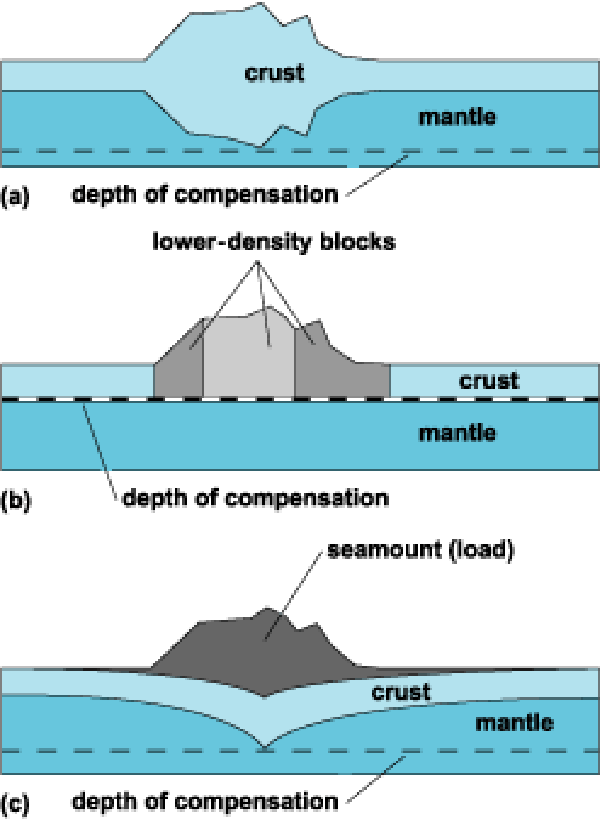
|
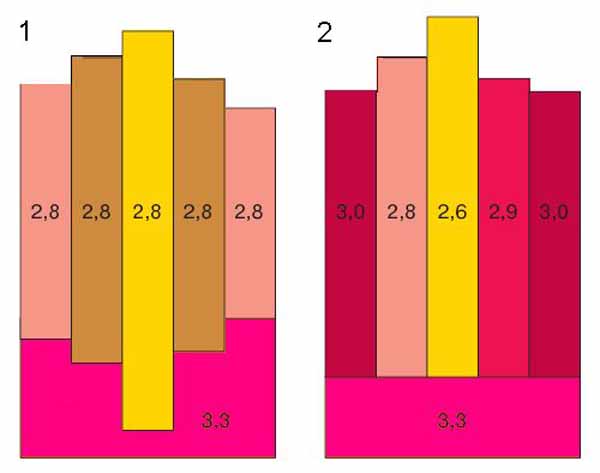
|
|
The main types of isostatic models. Each model implies a state of hydrostatic equilibrium such that the Earth’s outermost layers are in a state of flotation on their more fluid substrate. (a / 1) The Airy-Heiskanen Model (b / 2) - The Pratt-Hayford Model. (c) Vening Meinesz model.
|
Three principal models of isostasy are used:
- The Airy-Heiskanen Model, where different topographic heights are accommodated by changes in crustal thickness, in which the crust has a constant density.
- The Pratt-Hayford Model, where different topographic heights are accommodated by lateral changes in rock density.
- The Vening Meinesz, or Flexural Model, where the lithosphere acts as an elastic plate and its inherent rigidity distributes local topographic loads over a broad region by bending.
Airy and Pratt isostasy are statements of buoyancy, while flexural isostasy is a statement of buoyancy while deflecting a sheet of finite elastic strength.
|
Isostatic Rebound, Evidences
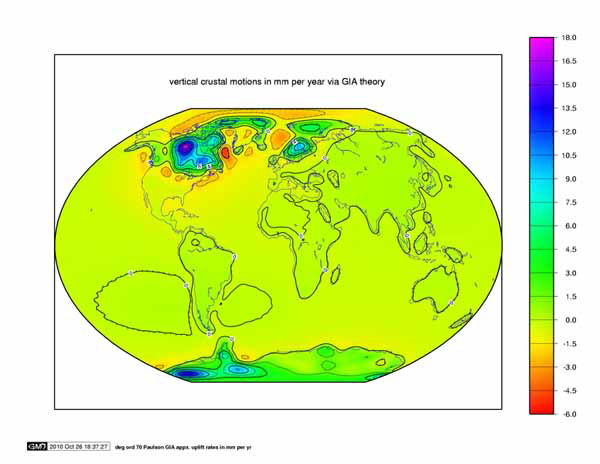
|
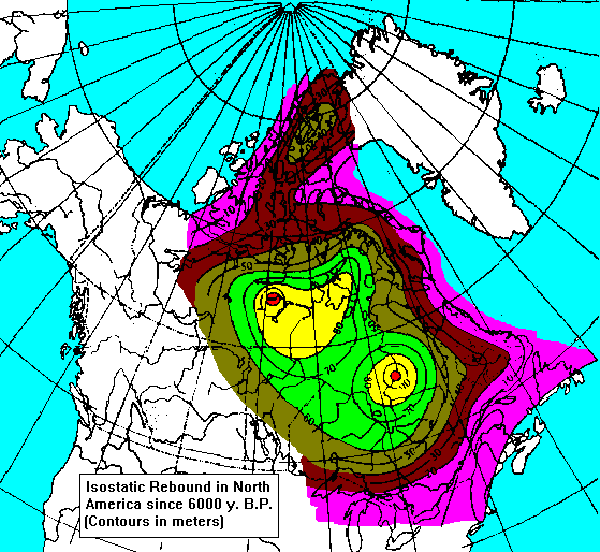
|
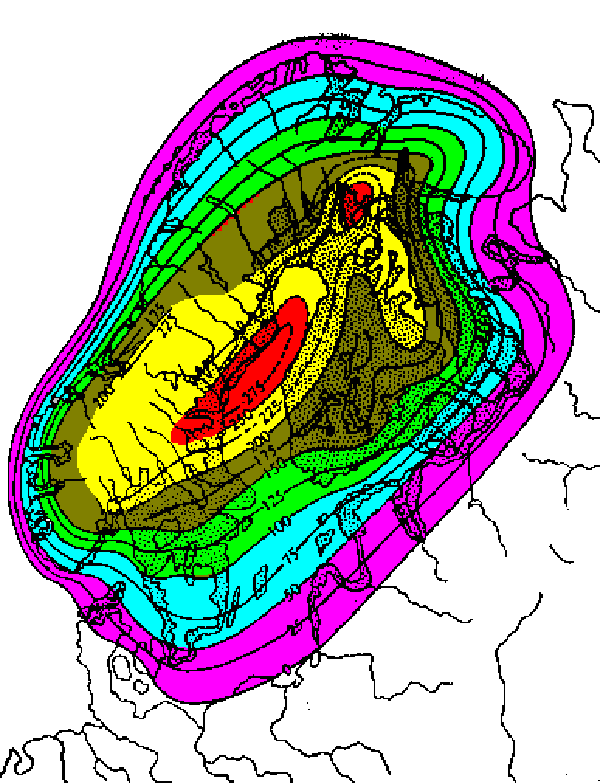
|
|
The main Earth's reions of Isostatic Rebound: World Map; North America; Scandinavia.
|
Isostatic Rebound is the upward movement of the Earth's crust following isostatic depression.
Isostatic Depression is large scale sinking of the crust into the asthenosphere because of an increase in weight on the crustal surface. Common in areas of continental glaciation where the crust was depressed by the weight of the ice.
Post-glacial rebound (sometimes called continental rebound, glacial isostatic adjustment) is the rise of land masses that were depressed by the huge weight of ice sheets during the last glacial period, through a process known as isostasy. It affects northern Europe (especially Scotland, Fennoscandia and northern Denmark), Siberia, Canada, the Great Lakes of Canada and the United States, the coastal region of the US state of Maine, parts of Patagonia, and Antarctica.
Seismologists have found that the topography in some elevated regions correlates with seismic velocities in the upper mantle, not with crustal thickness. It means that isostatic compensation of this elevated regions takes place largely in the mantle.
|
Sources of information:
1. Websites:
- http://en.wikipedia.org/wiki/
- http://www.physicalgeography.net
|

